“Exploration – Excavation – Exultation!” Take it from the Dino Institute team: there’s an art to digging deep. Uncovering the past isn’t always easy, and making sense of what was only begins at finding evidence of it. Maybe you could say that the same is true of exploring, excavating, and exulting Disney Parks past, too… and that’s where Park Lore comes in.
Our mission is to explore the stories behind the rides, adding context to the legends and lore around the world’s most beloved (and sometimes, denigrated) attractions. Together, we’ve dug deep into the tales of Lost Legends, explored the making of industry-changing Modern Marvels, reflected on the lessons learned from Declassified Disasters, and walked through unbuilt Possibilitylands across the site.
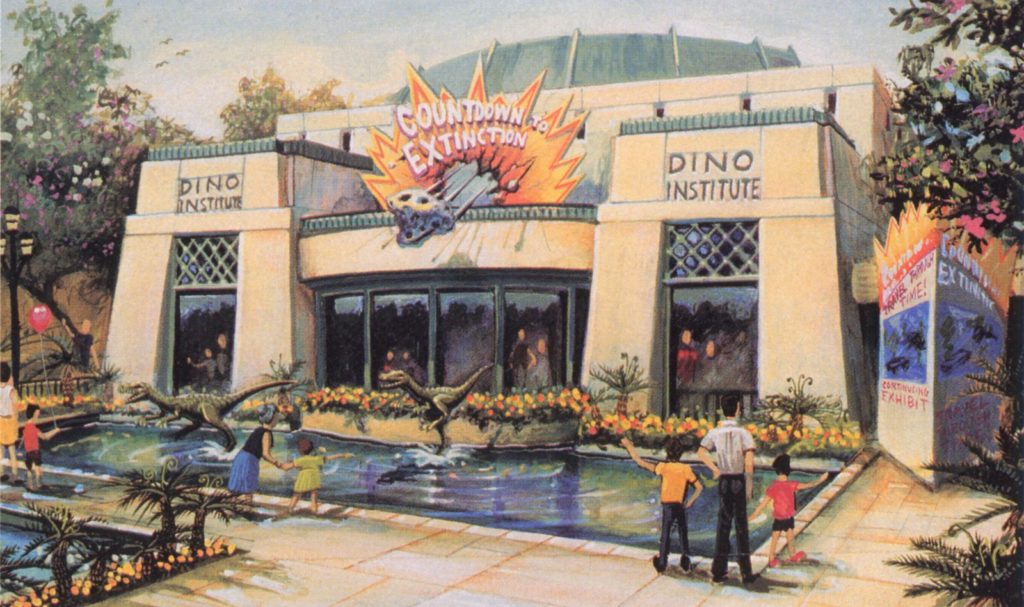
But through all the stories we’ve told on Park Lore, few hold a candle to one of the boldest, darkest, and downright weirdest rides ever developed by Walt Disney Imagineering. When Disney’s Animal Kingdom opened in 1998, Countdown to Extinction was its only dark ride, sending guests on a wild, off-roading journey through a steaming primeval jungle, pursued by some of the biggest, loudest, meanest, and hungriest creatures ever to walk the Earth.
Countdown to Extinction was a technological marvel, filled with incredible Audio-Animatronics and brought to life by one of the most talked-about ride systems ever developed by Imagineers. Yet Animal Kingdom’s only dark ride was also… a loveable mess, driven by a comical plot and blacklight jump scares meant to leave riders laughing, screaming, crying, or all-of-the-above.
Today, we’ll explore the development of Disney’s Countdown to Extinction and its subsequent transformation into DINOSAUR, detailing the differences and what makes the ride such an unusual, uneven oddity in Disney’s portfolio today. Unsurprisingly, the story begins in the past… So “let’s get in, grab the Iguanodon, and get out before that asteroid hits!” Hang on!
Disney and dinosaurs
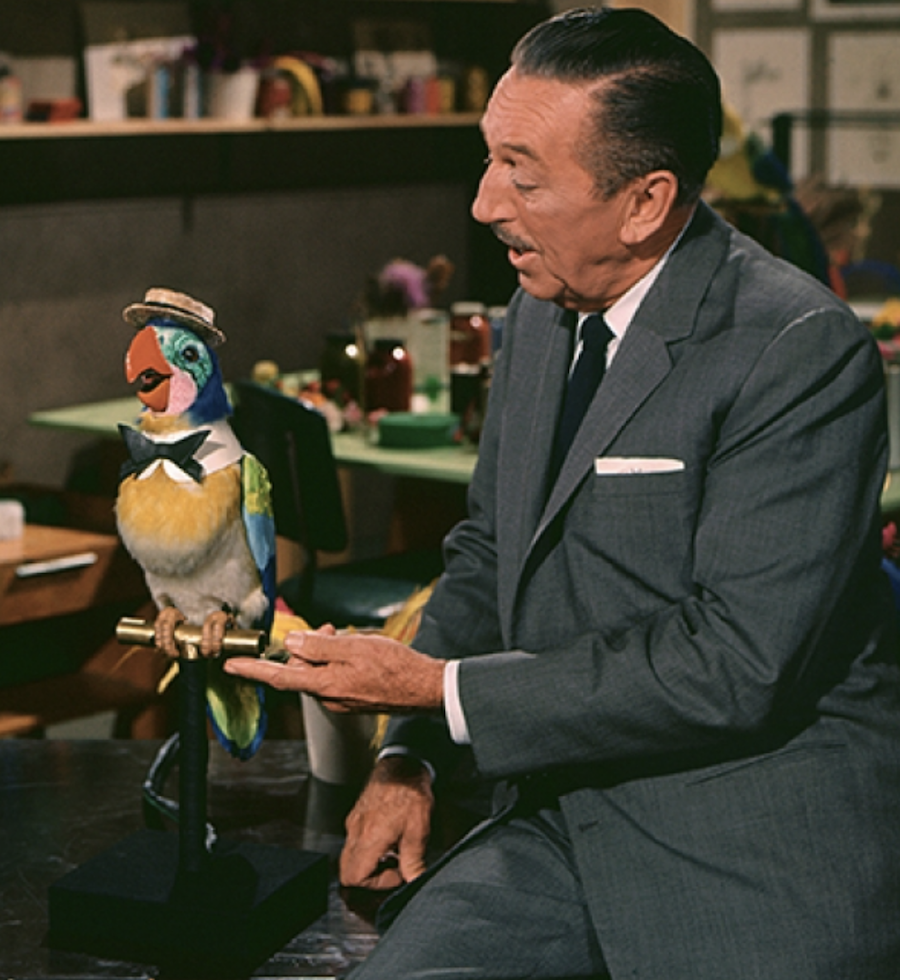
Though you may not have thought about it this way, the connection between Disney and dinosaurs goes way back. After all, one of the most pivotal innovations ever explored at WED Enterprises (today, Walt Disney Imagineering) was a technological tool meant to bring dinosaurs to life… Just not the kind of dinosaur you’re thinking of.
When the Modern Marvel: The Enchanted Tiki Room opened in 1963, its cast of singing birds was so groundbreaking and sensational, a new name was needed to describe the technology that made them possible. Walt and his team coined the phrase “Audio-Animatronics” to refer to the inner workings of the feathered reptilian cast, well-encapsulating their unique, three-dimensional animation individually synchronized with pre-recorded audio – all controlled by cutting edge, room-sized computers.
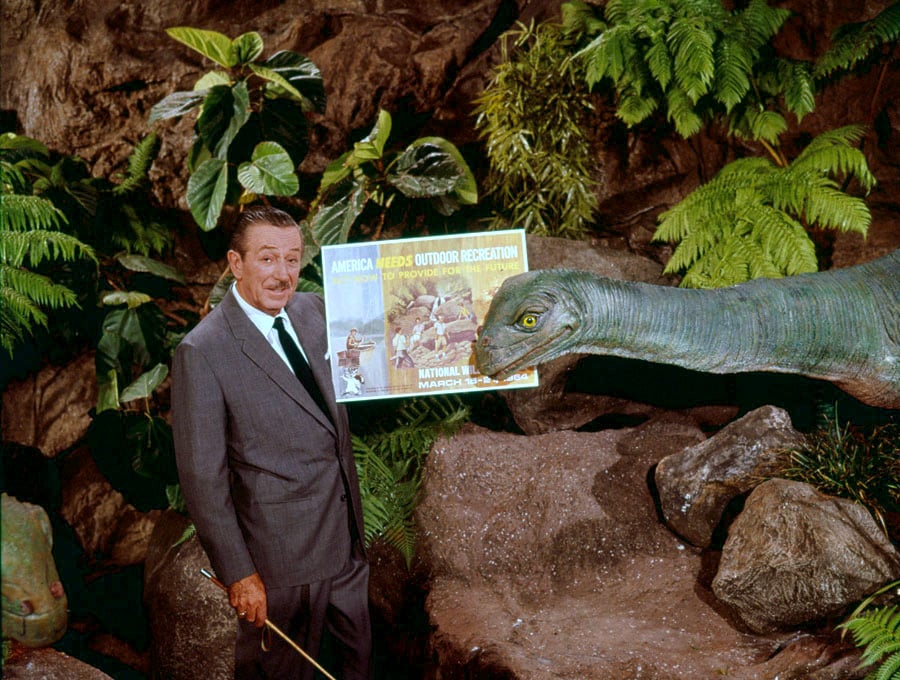
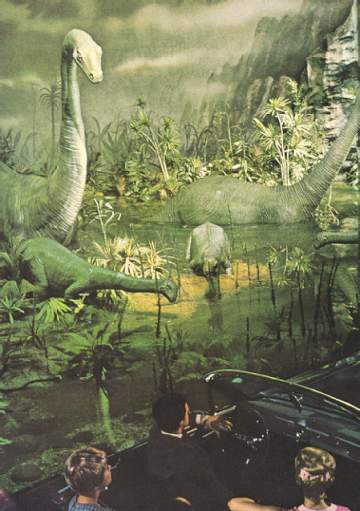
The Tiki Birds were small, but sensational. Yet even as they were making their auspicious Disneyland debut, WED designers were hard at work on adapting Audio-Animatronics technology to give life to their much larger ancestors. Debuting at the 1964 – 65 New York World’s Fair, the Ford Magic Skyway was its own kind of wonder, inviting guests to step aboard “motorless” Ford Mustang convertibles (new for ’64, and an attraction in their own right) to be whisked along elevated highways around – and eventually into – Ford’s pavilion.
Inside, riders would glide through massive sets recreating a primeval world populated by very large electro-mechanical and Audio Animatronic dinosaurs – a breathtaking encounter with a showstopping and genuinely new Disney creation meant to draw guests to Ford’s pavilion product showcase. (It worked – Ford’s pavilion was the second most-visited of the Fair.)
At the close of the World’s Fair, three of the attractions that Disney had designed for New York were relocated to Disneyland (as “it’s a small world,” Great Moments with Mr. Lincoln, and the Modern Marvel: Carousel of Progress). Ford’s Magic Skyway didn’t make the leap west. At least, not in one piece…
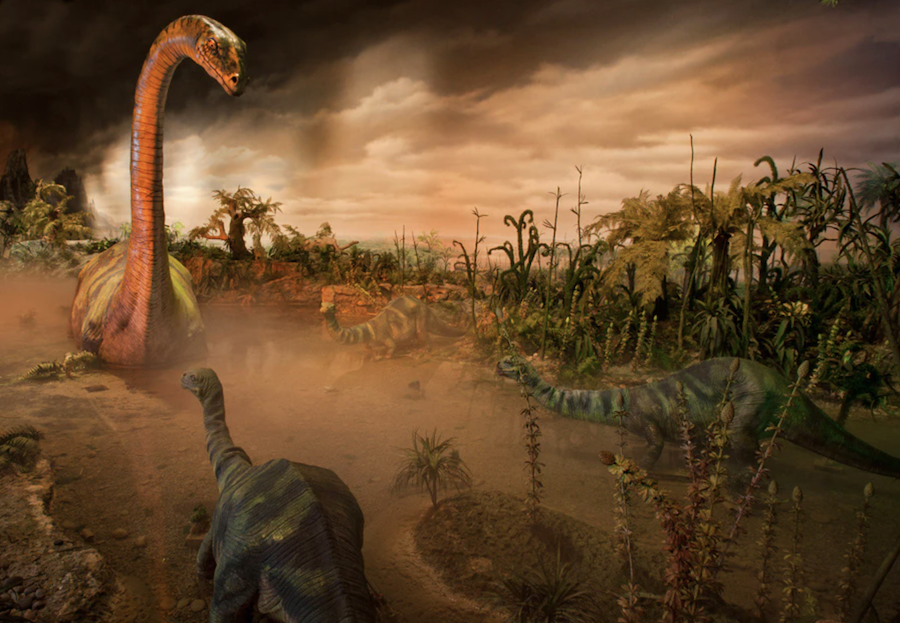
Instead, the technologies that powered the effortless aerial highways of the ride were adapted to create the Tomorrowland-set Lost Legend: The Peoplemover, and the dinosaurs themselves were relocated to and restaged in a new, prominent “Primeval World” diorama constructed along the route of the Disneyland Railroad, where they remain today!
Disneyland gained a third attraction featuring a dinosaur in 1979, if you include the skeletal remains of a T. rex encased in the desert hoodoos of Big Thunder Mountain.
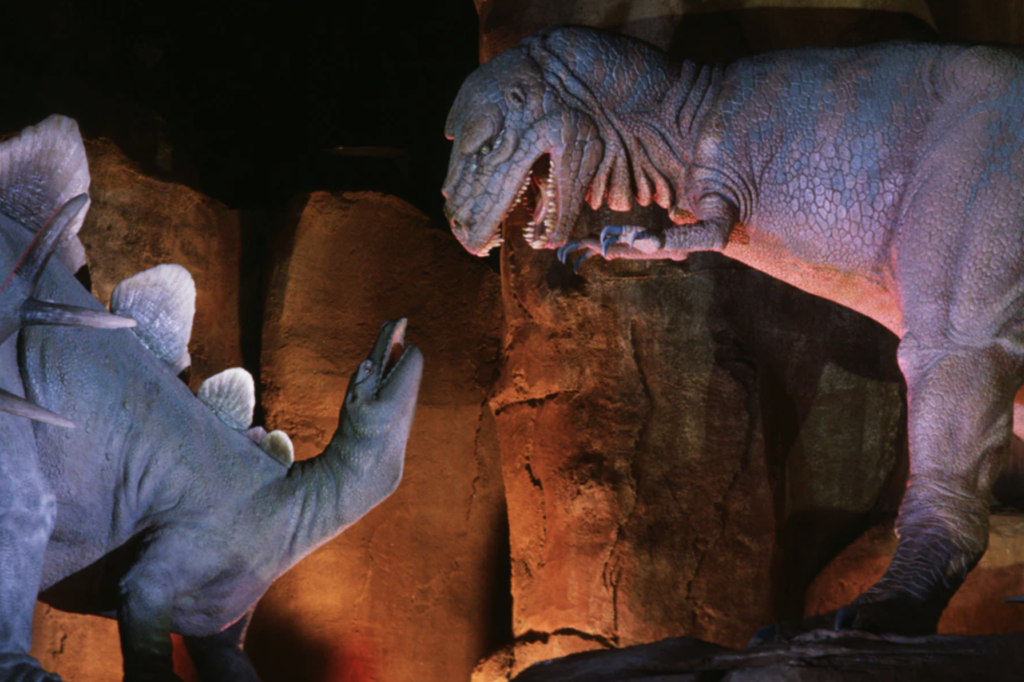
In 1982, Walt Disney Productions opened a new kind of theme park in Florida – EPCOT Center. Designed to be a “permanent World’s Fair” of Disney’s own design, EPCOT offered pavilions dedicated to innovation in areas of science and industry. Of course, rather than focusing on the future, a pavilion dedicated to energy looked to the past.
The park’s Lost Legend: Universe of Energy was a 45-minute, multi-part attraction that included a dark ride section traveling through a familiar primeval world – ostensibly to see the “origin of fossil fuels”; more probably, because such a journey fit the scale of EPCOT, the existing moulds and mechanics of Imagineering, and the whims of sponsor Exxon.
Maybe you’d even count the 1989 opening of the Disney-MGM Studios with the iconic Gertie the Dinosaur wading in the park’s Echo Lake.
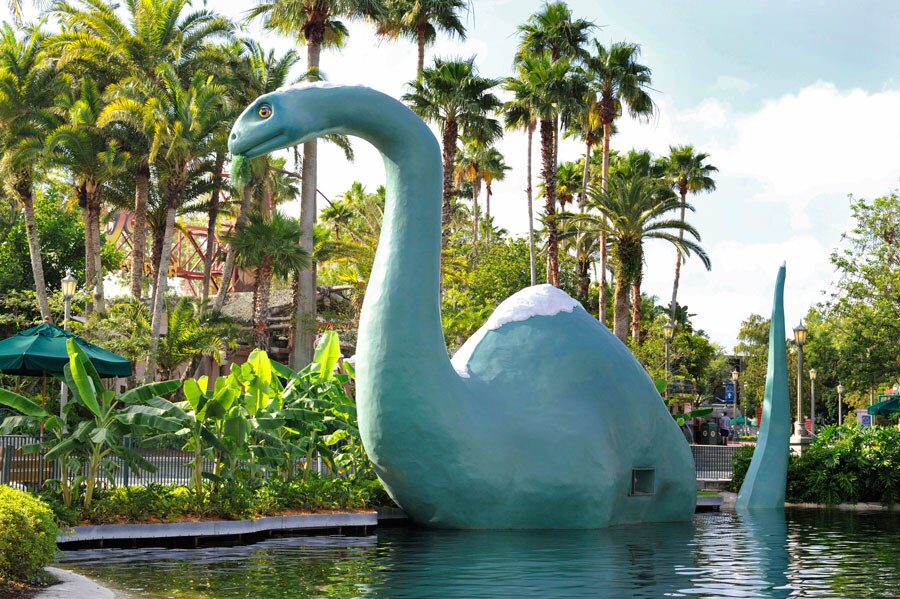
Though it’s stylized as a mid-century roadside attraction, the park’s Gertie is meant as a tribute to the animated character designed by Winsor McCay in 1913 (when Walt was only twelve) as a historic pioneer in animation. In 1955, Walt even noted on his Disneyland television show that the success of Gertie “encouraged other pioneers to creative efforts that in time,” and “led to the establishment of the animated cartoon as an industry.”
Suffice it to say that for nearly every decade of Disney Parks’ history, dinosaurs had played a part in a pivotal attraction or innovation. Yet for all the prehistoric prominence of dinosaurs in the story of Disney Parks, none of it would match the creatures’ role in a whole new theme park born of the ’90s – where dinosaurs could fix a foundational issue…
Disney’s Wild Animal Kingdom
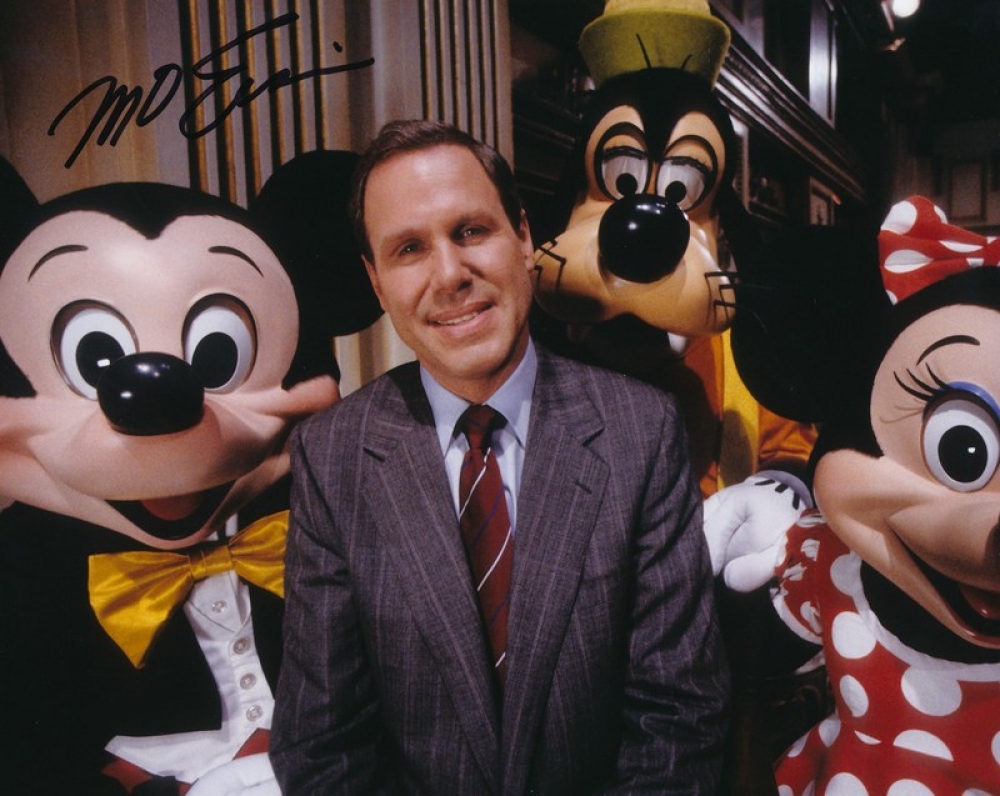
You have to imagine that as the ’80s gave way to the ’90s, The Walt Disney Company was in the midst of a resurgence like it had never seen before. Under the guidance of the bold, brash, and creatively-charged Michael Eisner, the Disney Renaissance was officially in production. Meanwhile, in the company’s theme parks, the pulse-of-pop-culture, “Ride the Movies” mantra swept across the globe with STAR TOURS, Fantasmic!, and Splash Mountain as proof of concept…
With the revitalized Disneyland and the brand new Disney-MGM Studios proving more popular than even Eisner had anticipated, big-budget, blockbuster E-Tickets like Indiana Jones Adventure, Alien Encounter, Muppet Studios, and The Twilight Zone Tower of Terror were greenlit left and right. The sky seemed to be the only limit for Disney’s theme parks, and even as the pavement dried on the Disney-MGM Studios backlot, designers were already at work envisioning what a fourth gate in Central Florida could look like…
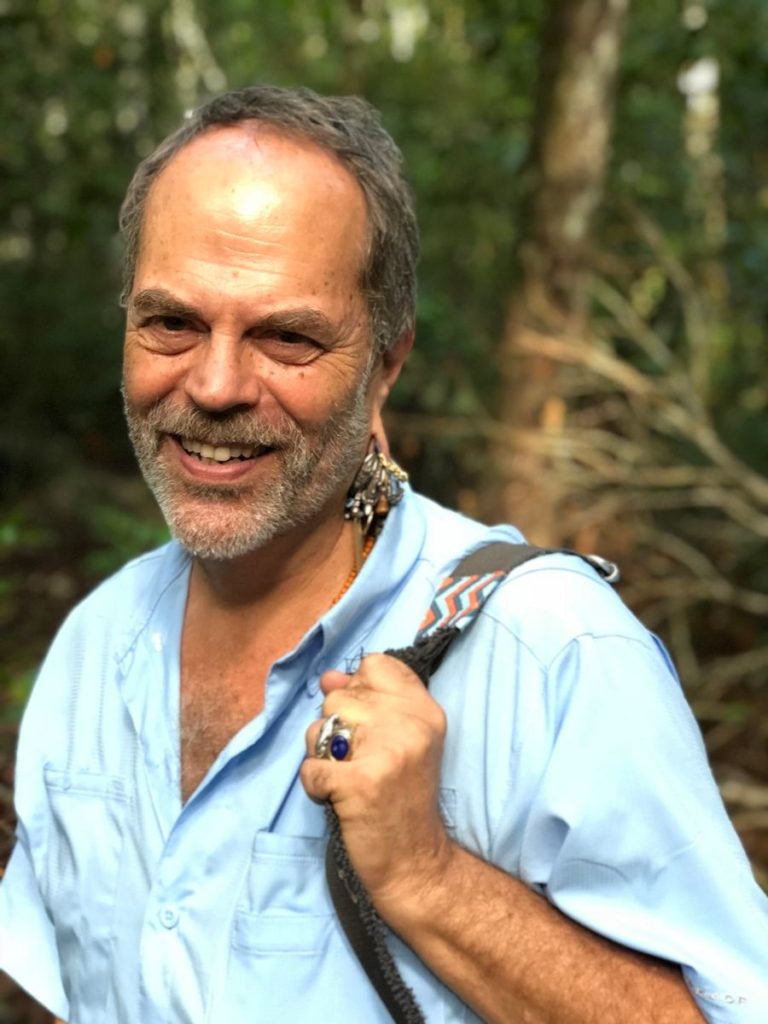
So it’s no surprise that even by 1989, former Imagineer and real-life adventurer Joe Rohde was already on the case. Beginning at Disney as a model-builder at age 25 in the lead-up to the opening of EPCOT Center, Rohde worked as a creative designer on Captain EO, Maelstrom, and the Adventurers Club. But his concept for a fourth theme park in Orlando was by far his most ambitious (and likely, personal) project yet, based on the gargantuan premise of a theme park celebrating humanity’s relationship with animals and the natural world.
There was just one problem. In 1992, Disneyland Paris opened. Meant to be Michael Eisner’s cornerstone project for the company, Disney’s first European park was richly detailed, luxuriously produced, and extravagantly brought to life… but it was also a financial failure, causing decades of closures, cancellations, and cop-outs that rippled across the company. As a result, there was sincere question within the company as to whether Disney’s theme parks had hit a wall. Maybe the division was “mature,” with about as much global capacity as it could justify…
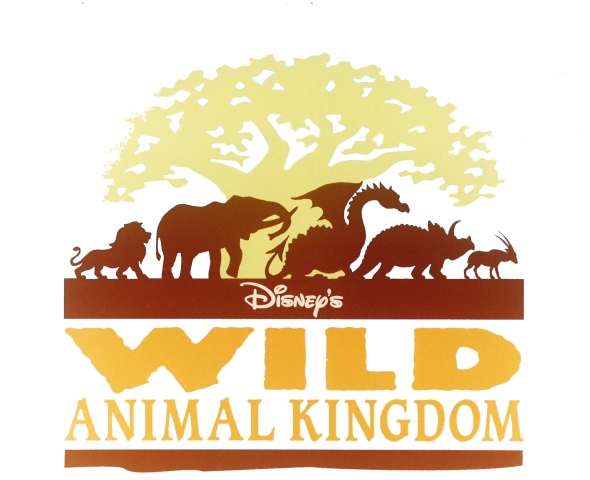
To make matters worse, Rohde’s sketched-out fourth gate wasn’t just a massive capital investment. Disney’s Wild Animal Kingdom was the kind of rich, luxurious, and extravagent project that a now-wary Eisner and Disney’s pallid, skeptical executives could hardly bear. It was Eisner himself who allegedly questioned if the “mere sight” of living animals would truly be enough to inspire guests to visit a park. Only Rohde infamously bringing a live tiger into a conference room filled with Disney executives could’ve changed his mind.
Sold on the transformative power of up-close encounters (and bolstered by a resurgence in Orlando tourism in the mid-’90s), Eisner greenlit Disney’s Wild Animal Kingdom in the autumn of 1992. “It always is more frightening when it’s different,” the CEO later said of the park, “but that’s what makes it worthwhile in the end.”
Năhtăzū
Development of Disney’s Wild Animal Kingdom was underway… with a caveat. Rohde recalled to Fortune that Disney scouts “went to zoos and reported back that there’s one in every city, you pay three bucks to get in, they’re subsidized, they’re dirty, they’re smelly, animals are in cages, people think they’re depressing… How in the world is this a business we want to get into?”
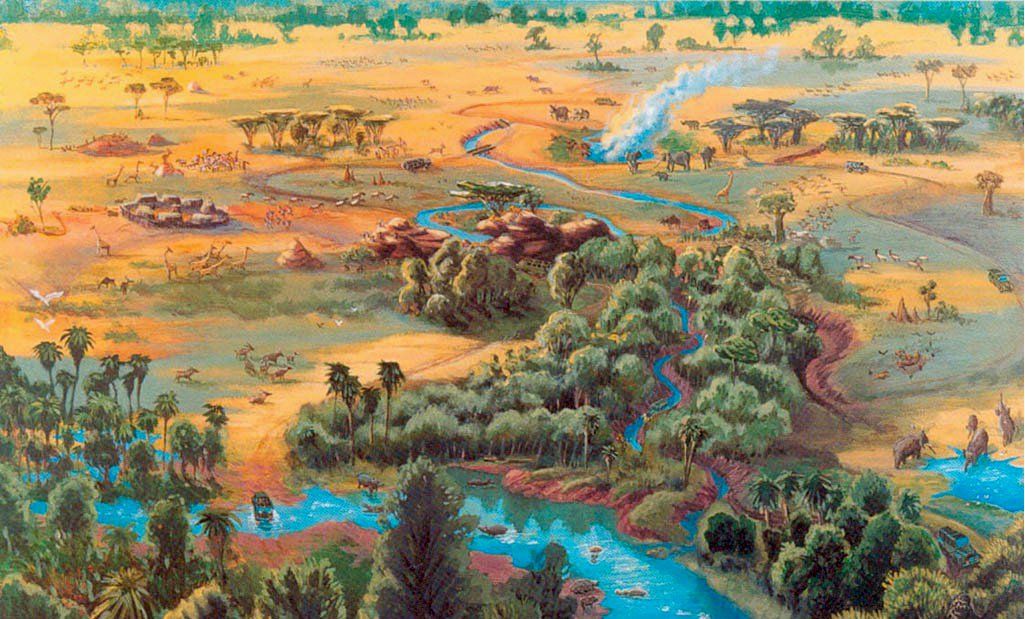
It was a fair question! After all, even by the early ’90s, a generation of zoos across the country were pivoting toward a “third era” of habitat design standards, marked by naturalistic enclosures and a kind of “Imagineering Lite” design aesthetic – one with animals organized by continent, and habitats and guest areas wrapped in scenic design work emulating Africa, Asia, South America, Australia, and beyond. And like them all, Animal Kingdom would technically be a zoo – at least as conferred by its accreditation with the Association of Zoos and Aquariums.
So even if Disney’s Animal Kingdom successfully took that formula to the next level through authentic architecture and artistans, genuine construction materials and processes, Imagineering-adventurers’ immersive realism, Rohde’s deeply embedded philosophies and themes, and even a handful of rides and attractions, the question had to remain: what would make Animal Kingdom more than your neighborhood zoo? And maybe more to the point, worth Disney’s admission prices?
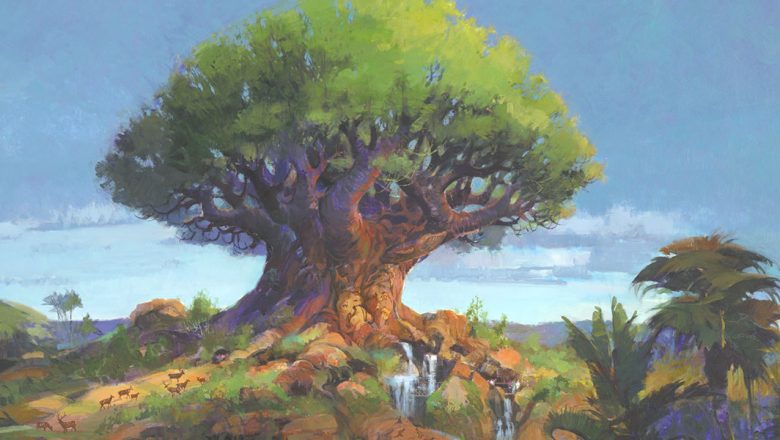
Of course, Imagineers had an answer. Sprawling across nearly 500 available acres, Animal Kingdom would already be brought to life on a scale no other Disney Park could match. But in addition to its physical size, the park’s mature, “Blue Sky” build-out would be one of the fullest, richest, and most varied theme parks on Earth.
At least in those optimistic plans, Animal Kingdom would be accessed via a Garden of Eden – a verdant, green Oasis surging with water and rocks and animal life, truly immersing guests into the park’s wild ethos with unmarked trails and up-close encounters. From there, they’d pass into Safari Village (today, Discovery Island) – a sort of craftsman crossroads of intercultural appreciation and celebration of the natural world.
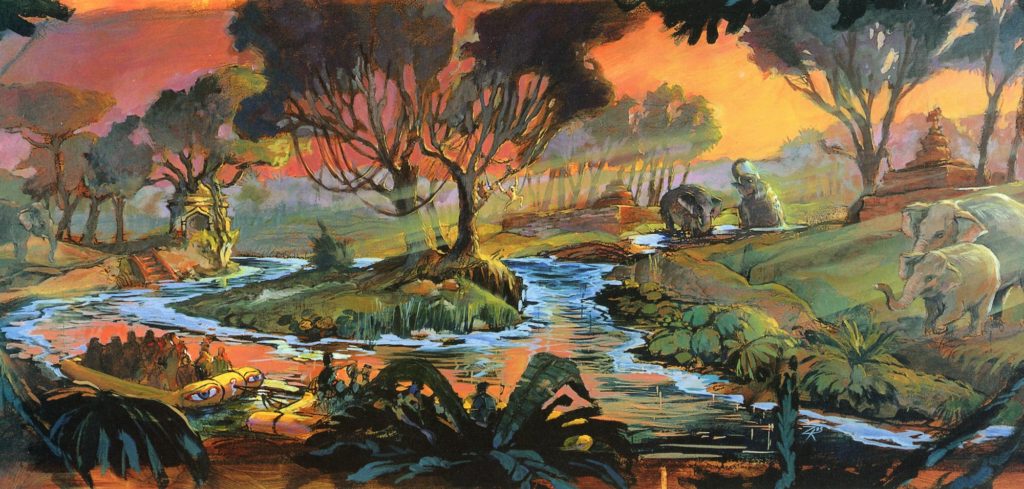
From there, bridges would indeed diverge into gargantuan lands bringing to life the cultures and habitats of Africa and Asia. Each would be marked by its own “safari” style, stortelling, sightseeing ride – Kilimanjaro Safaris in Africa, and Tiger River Rapids (above) in Asia – through real, “boundary-free” animal habitats with “thrill ride” components.
But at least as far as executives and Imagineers were concerned, what would elevate Disney’s Animal Kingdom to the “Disney Park” echelon came down to its divergence from zoos in two key areas. As imagined by designers (and echoed in the park’s eventual opening day Dedication), Disney’s Animal Kingdom would be “a kingdom of animals real, ancient, and imagined…” And of course, those last two would make all the difference…
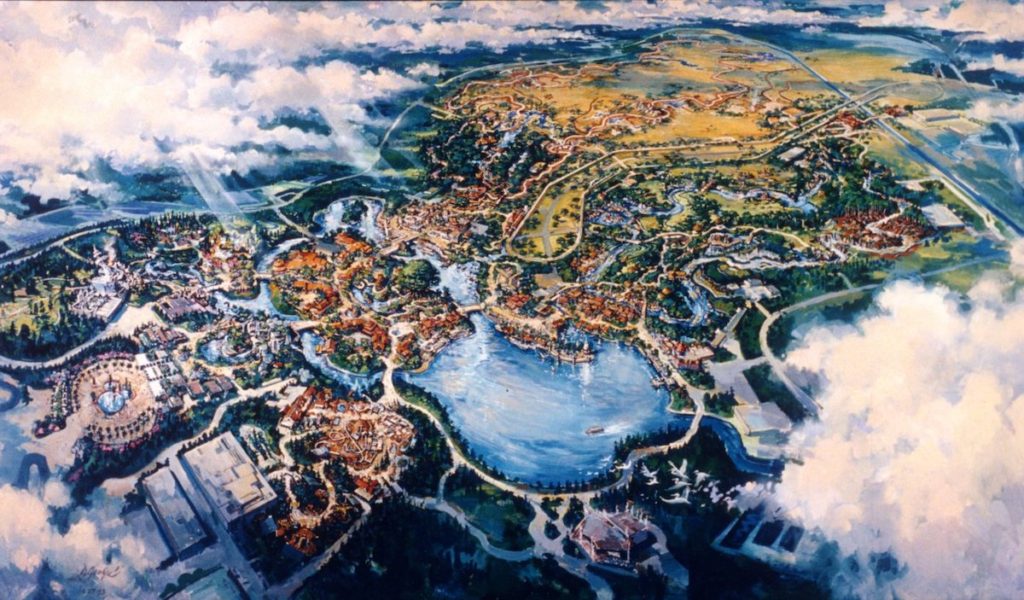
The key, as far as Imagineers were concerned, was that Disney’s Animal Kingdom wouldn’t necessarily be about animals; it would be about our relationship with animals. In Africa, that relationship would be explored through a narrative of conversation, economy, and the untradeable value of nature; in Asia, through the lense of habitat destruction, deforestation, and reclamation.
Through that lens, lands dedicated to “ancient” and “imagined” animals would be no less grounded. They would explore the stories we tell about animals and the natural world, and how those stories pass into pop culture and legend – as vital a part of the park’s larger themes. In short, the story of humanity’s relationship with animals wouldn’t be complete without chapters dedicated to dinosaurs and dragons…
Of course, neither of those lands turned out quite the way Imagineers had envisioned. Read on as we explore the Dinoland that could’ve been… and how everything changed.


